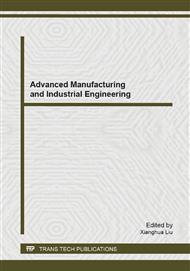p.265
p.271
p.275
p.280
p.285
p.290
p.294
p.298
p.304
Periodic-Doubling and Hopf Bifurcations of a Two-Degree-of-Freedom System with Elastic Constraints and Clearances
Abstract:
Based on the study of a dual component system with elastic constraints, the stability and local bifurcations of the soft-impacts system, such as piecewise property and singularity, was analyzed by using the Poincaré map and Runge-Kutta numerical simulation method. The routes from periodic motions to chaos, via Hopf bifurcation and period-doubling bifurcation, were investigated exactly. In the large constraint stiffness case, the period-doubling and Hopf bifurcation exist in the two-degree-of-freedom system with elastic constraints and clearances. The clearances of the system, stiffness and damping coefficient of the elastic constraints is the main reasons for influencing the chaotic motion. The steady 1-1-1 period orbits or 2-1-1 period orbits will exist within a wideband frequency range and the value of velocity will be higher when appropriate system parameters are chosen.
Info:
Periodical:
Pages:
285-289
Citation:
Online since:
August 2014
Authors:
Keywords:
Price:
Сopyright:
© 2014 Trans Tech Publications Ltd. All Rights Reserved
Share:
Citation:


